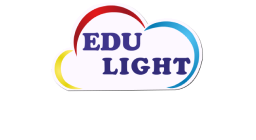In the rapidly evolving landscape of education, the concept of blended learning has emerged as a powerful tool for enhancing the learning experience. Blended learning, also
known as hybrid learning, combines traditional face-to-face instruction with online learning components, offering a dynamic and flexible approach to education. For eLearning
companies seeking to revolutionize the way students engage with educational content, embracing blended learning can unlock a wealth of benefits.
1. Enhanced Flexibility:
Blended learning offers students the flexibility to access educational content anytime, anywhere. By combining online resources with traditional classroom instruction, students can tailor their learning experience to fit their individual schedules and preferences. This flexibility empowers students to take ownership of their learning journey and promotes self-directed learning skills.
2. Personalized Learning Experience:
One of the key advantages of blended learning is its ability to cater to diverse learning styles and preferences. Through online platforms, eLearning companies can deliver customized content that adapts to each student’s needs, pace, and skill level. This personalized approach fosters deeper engagement and comprehension, ultimately leading to better learning outcomes.
3. Expanded Access to Resources:
Blended learning opens up a world of resources beyond traditional textbooks and classroom materials. eLearning companies can leverage multimedia elements such as videos, interactive simulations, and virtual labs to enhance the learning experience and provide students with hands-on, experiential learning opportunities. This access to diverse resources enriches the
educational experience and promotes critical thinking and creativity.
4. Improved Teacher Efficiency:
Blended learning not only benefits students but also empowers educators to optimize their teaching effectiveness. By automating administrative tasks and leveraging online platforms for grading, feedback, and assessment, eLearning companies can streamline the teaching process and free up valuable time for teachers to focus on personalized instruction and mentorship.
5. Cost-Effectiveness:
Blended learning offers cost-effective solutions for eLearning companies seeking to deliver high-quality education to a wide audience. By leveraging online platforms and digital resources, eLearning companies can reduce overhead costs associated with traditional classroom instruction, such as facility maintenance and printing materials. This cost savings can be passed on to students, making education more accessible and affordable.
6. Preparation for the Future:
In today’s digital age, proficiency in technology is essential for success in higher education and the workforce. Blended learning equips students with valuable digital literacy skills, preparing them to thrive in an increasingly technology-driven world. By integrating technology into the learning process, eLearning companies are preparing students for the demands of the 21st-century workforce and empowering them to succeed in an ever-changing global economy.
In conclusion, blended learning offers eLearning companies a powerful tool for transforming the educational experience and empowering students to reach their full potential. By combining the best elements of online and offline education, blended learning creates a dynamic and personalized learning environment that fosters engagement, creativity, and lifelong learning. As eLearning companies continue to innovate and adapt to the evolving needs of students, blended learning will undoubtedly play a central role in shaping the future of education.






